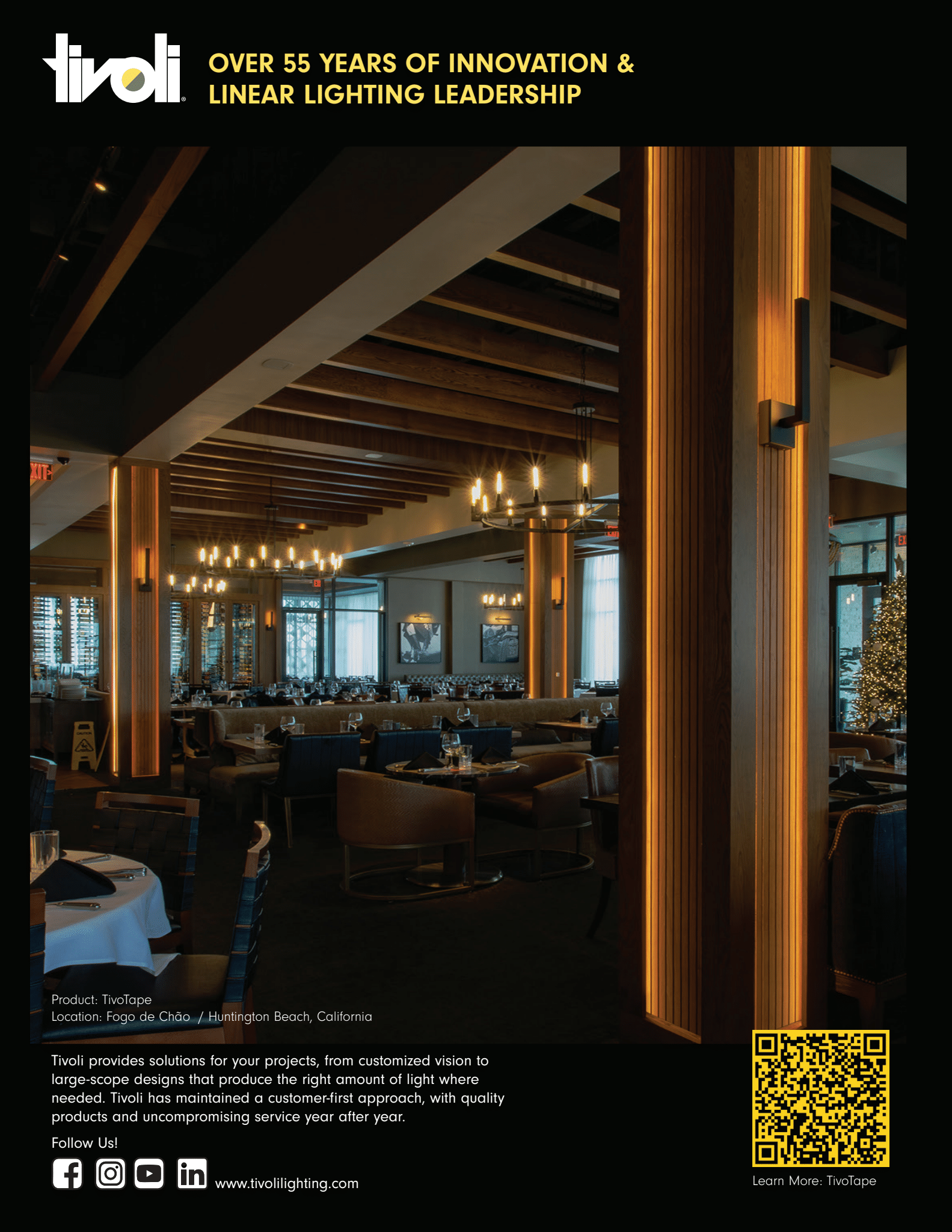
5 minute read
Up Close with Steven Rosen
By Shirley Coyle, LC
Pulled into theater in his suburban LA high school, Steven Rosen recalled the first time he stood on stage, “I thought ‘Oh no, this is not for me!’ I never had the desire to be someone else… I gravitated to the technical side. Soon I was standing behind the light board, lifting levers with my hands, my feet, and even my mouth!”
“The best part was the ballet of it all,” he continued. “You change the lights in a very manual way, but in time with the music or scene. I learned how light controls emotion. You can walk into a space and be affected by light, but what really makes people excited is dynamic light. I figured that out early, deciding I wanted to be a lighting designer.”
After college in California, Steven went to St. Louis for his BFA at Webster University. There, in 1980, Steven’s professor invited an HOK architect to speak to the class about architectural lighting. He recollected, “I was taken aback… it never occurred to me that I could do what I was doing anywhere other than in theaters.”
A semester interning with Tom Lemons in Massachusetts was followed by a return to St. Louis to finish his degree. He then migrated to New York City, “where I felt I found my people!” He earned his MFA in stage design at NYU while also independently managing production for the university’s dance department.
“One day Tom called, asking ‘Why don’t you come up here? We could use an extra set of hands.’ It seemed like there was much to learn there and much I might enjoy…I took the plunge!”
Steven went on to establish his own firm, Available Light, Inc. in Boston in 1992. One of his biggest challenges came 6 or 7 years ago – thinking about what’s next for his firm. “I wanted a way to move the company forward, set it in a place where it would be fine without me. We started with two shareholders – my wife, Susan, and I. Now we have eight shareholders – I’m slowly becoming less of an owner! All of it has been hard, but it’s also been joyous. It helps that there’s a remarkable group of people here; it’s not hard to imagine the next layer of leadership!
Reflecting on success, Steven offered two thoughts. “First, surround yourself with the right people. I don’t agree with the group all the time, and they don’t agree with each other all the time. But there’s a healthy amount of respect and love that comes along with disagreement – and that’s what you need.”
“Second, our success is tied to the diversity of the work that we do. Until a few years ago, we had three legs to our stool: architectural lighting, museum exhibition lighting, and trade show lighting. In the economic downturn of the 1980s and again in 2008, the trade show division kept us afloat.”
That all changed when the pandemic hit. “All our trade show work stopped overnight. We had work in architectural and museum exhibits that kept us going. We’ve added theme entertainment or experiential design as our fourth leg to the stool. We were experiential lighting designers before anybody had a name for it… creating walk-through environments in museums. It’s a true fusion of my theatrical and architectural training.”
Steven’s advice for newcomers to the lighting community: “First, please come. We are out there beating the bushes. In 2024, our firm did three presentations at LDI (Live Design International) to reach young people attending the conference. There are ambassadors like Chip Israel, who travels the country stopping at every educational program, reminding people there’s a decent career in lighting and lighting design.”
“Second, be flexible – remember what you learned in school is not the real world; it’s theoretical. You need to take a few bumps along the way, learn some new skills. Remain flexible in how you use the software, how to apply the things you learned, and think about all the places where you can apply lighting and lighting design. Don’t think too much of yourself – think of others. One of my favorite phrases is: ‘Work hard and be nice to people.’”
Involvement in lighting associations was another of his recommendations. He noted, “There is more to this world than just showing up to work. There has been a stress test on our associations, including IES, IALD, AIA, and others that have built up and supported collaboration in the lighting industry. The redefinition of work-life balance hit this kind of participation – young people thinking, ‘I don’t have time to do my forty-hour week, volunteer and have a private life.’”
“While I get that, we work hard at Available Light to make time for people to be involved in these associations. It’s important, and I’ve seen direct correlation to working in associations and being better at what I do, which brings us more success. We become more expert at things.”
Steven works a lot, finding fun in what he does. But what about outside of work? “I love the whole notion of wine –not just to drink wine, which I do love, but to learn about wine, to visit vineyards.” Steven has been on many wine exploration trips. A recent wine dinner was hosted by a museum exhibit designer, who also owns a winery and vineyard. “Our host had become a scholar on ancient indigenous vines. He brought 8-10 bottles of Zinfandel, all from the same winemaker, all the same vintage, but every bottle was from a different vineyard in California. If you can enjoy, appreciate, and anticipate the subtleties and differences of wine, you can begin to understand the subtle differences in tunable white lighting – that shift from 3000K to 4000K or 4500K,” he explained, artfully returning the conversation to his heart’s work – lighting.


